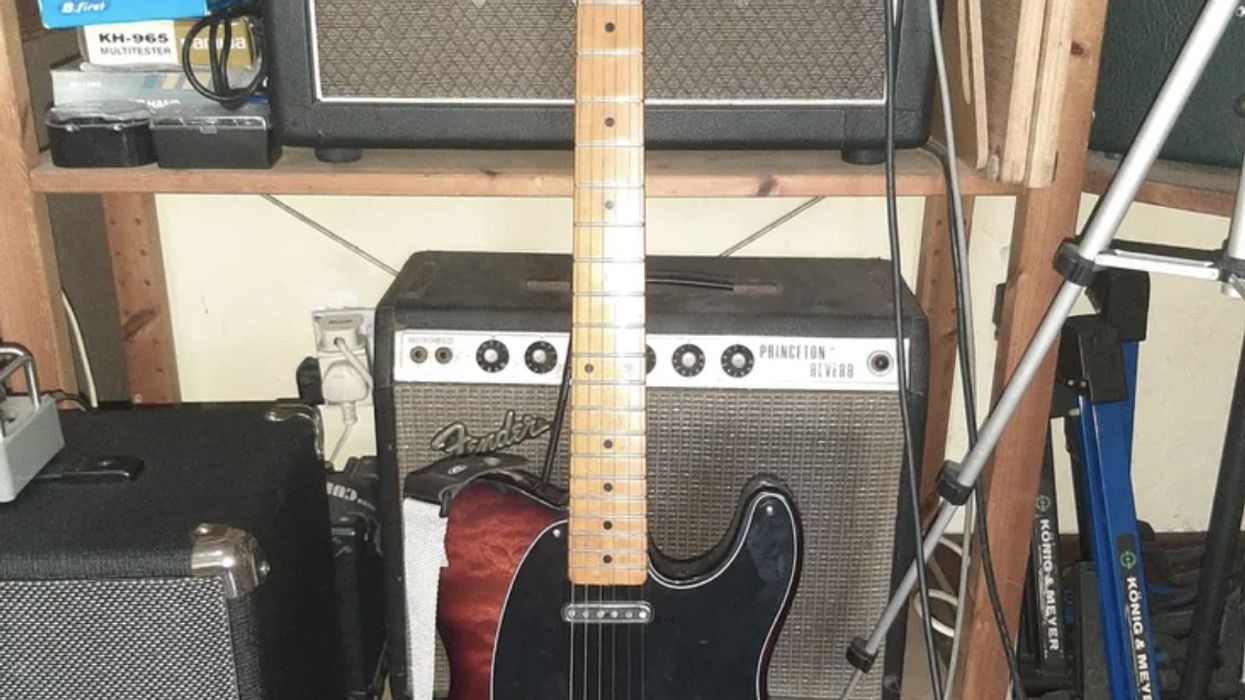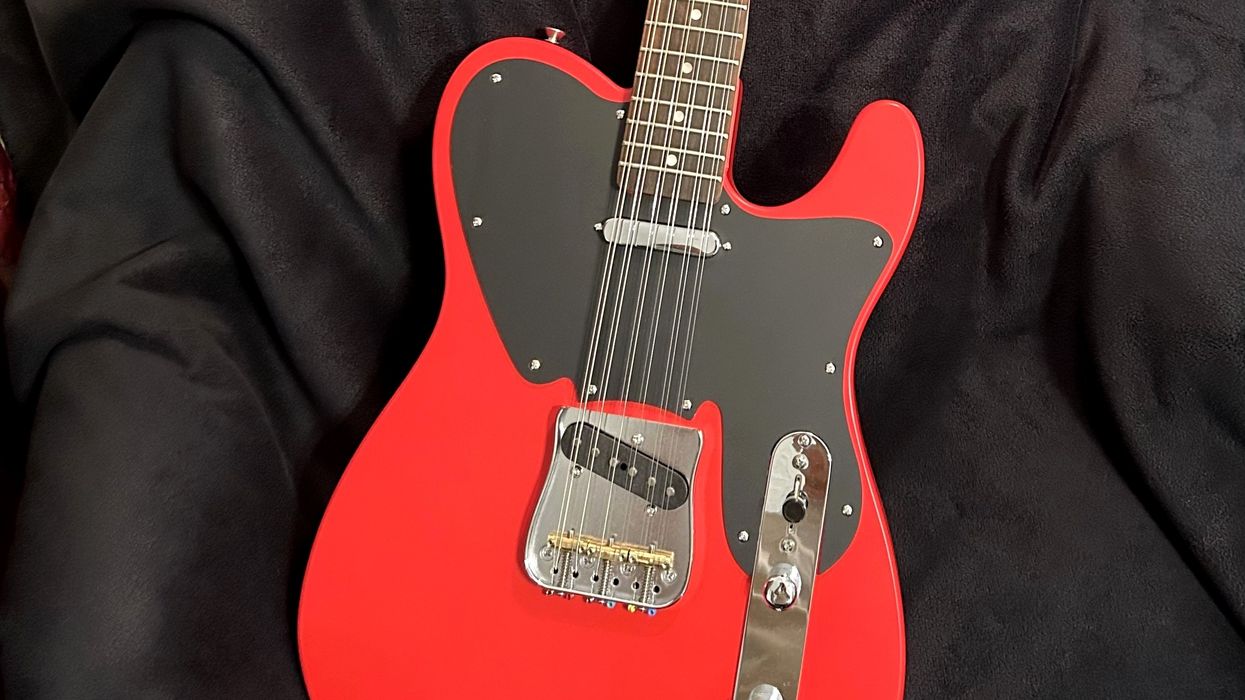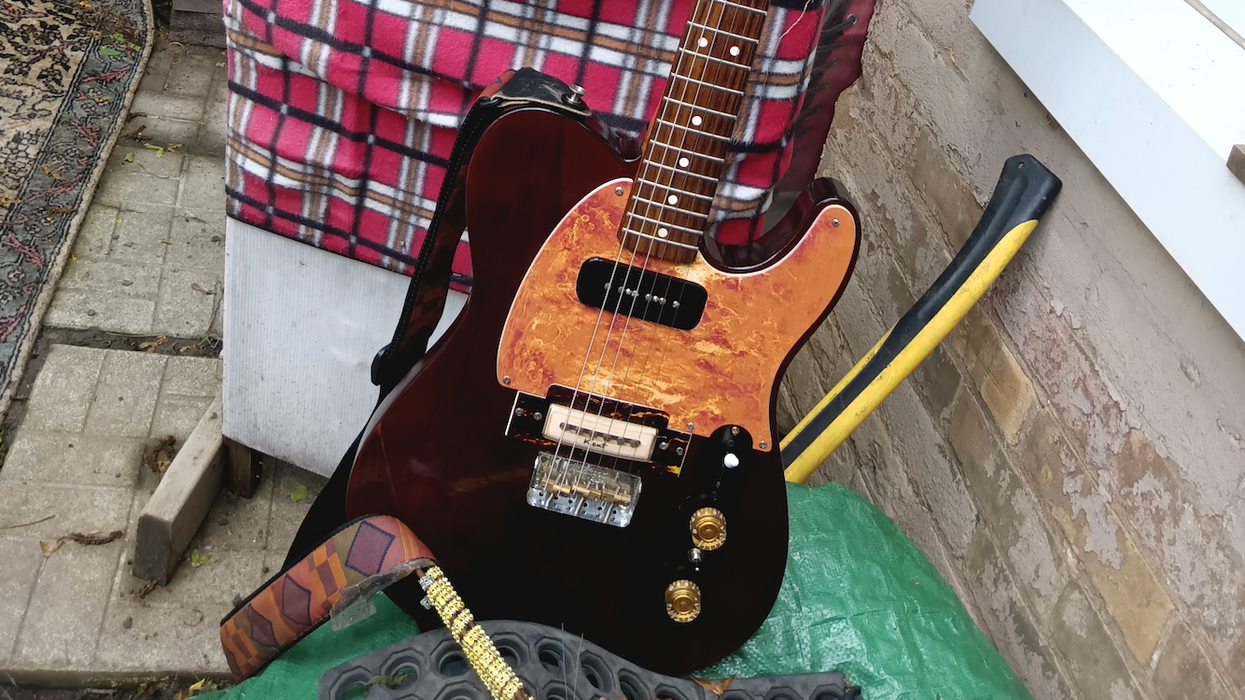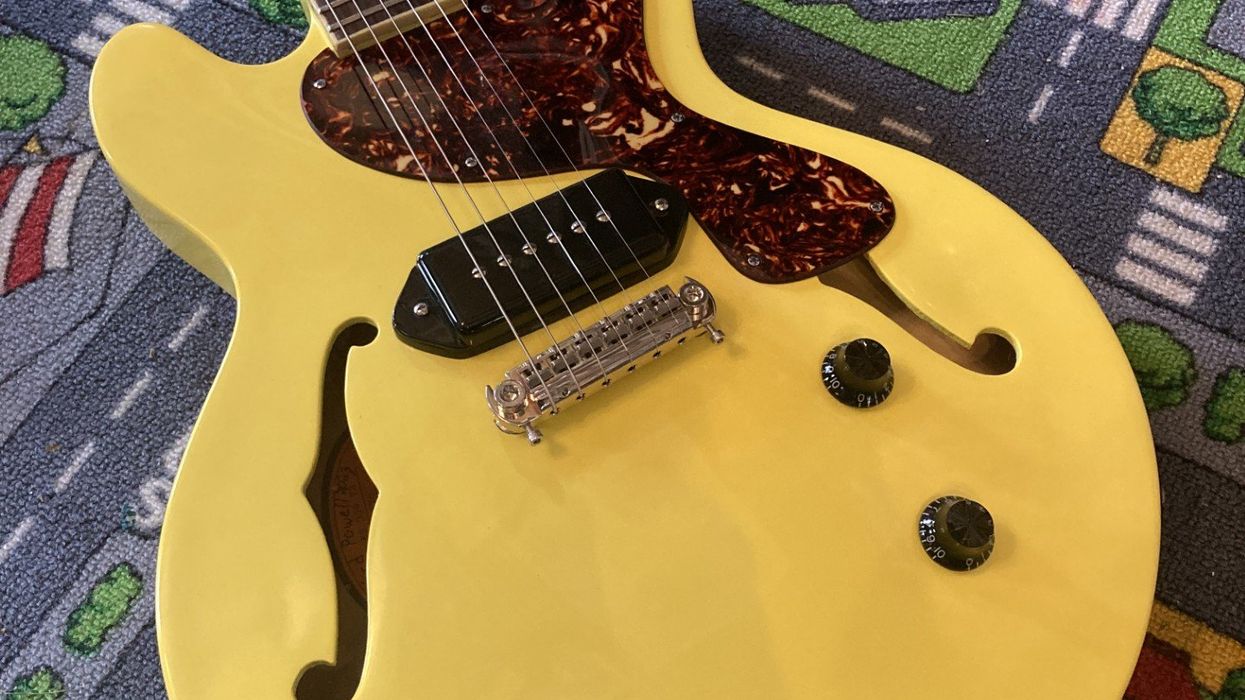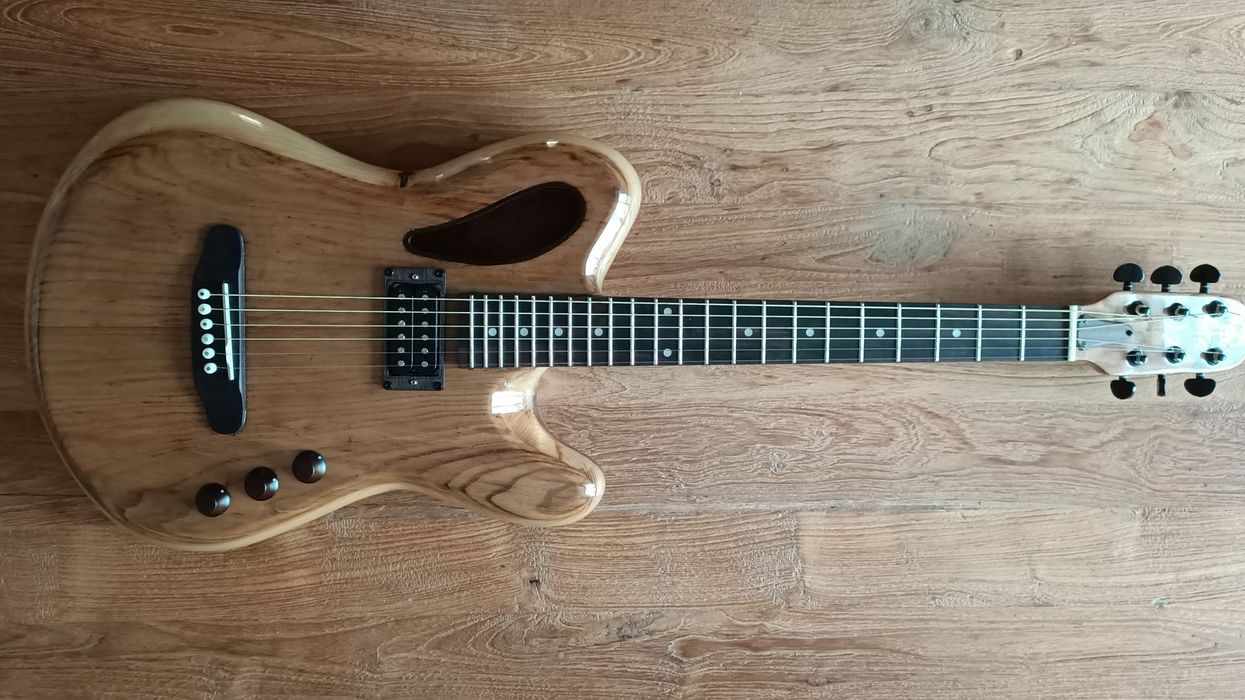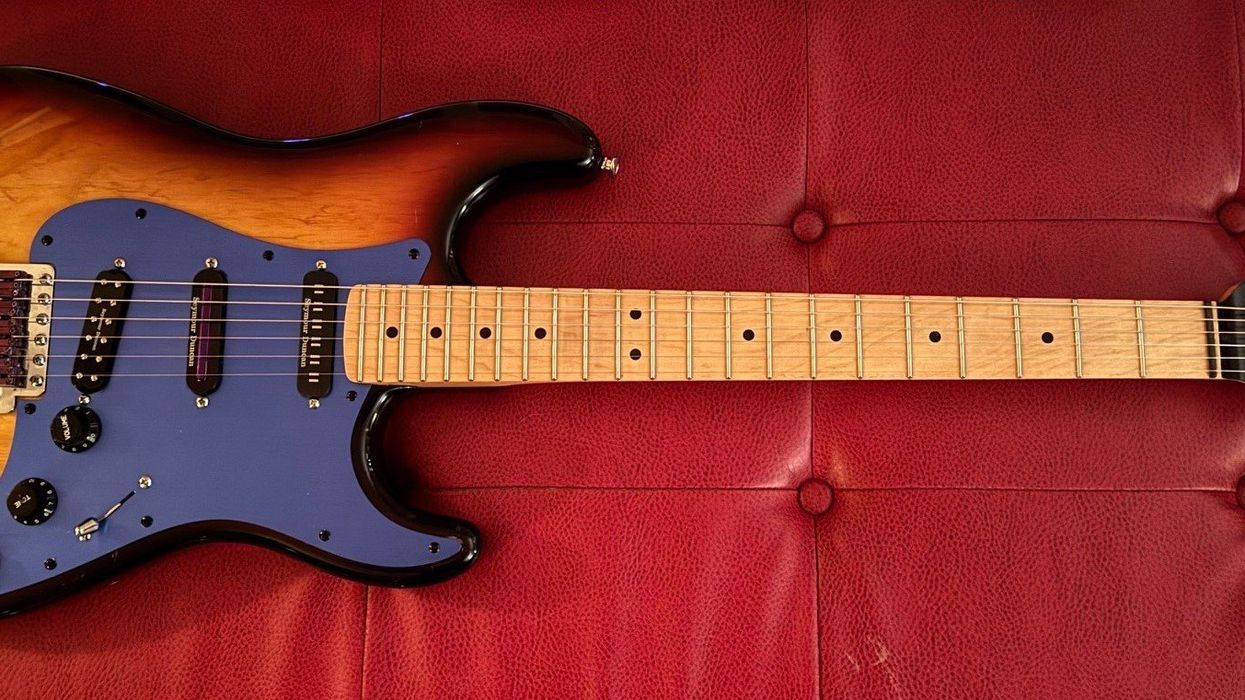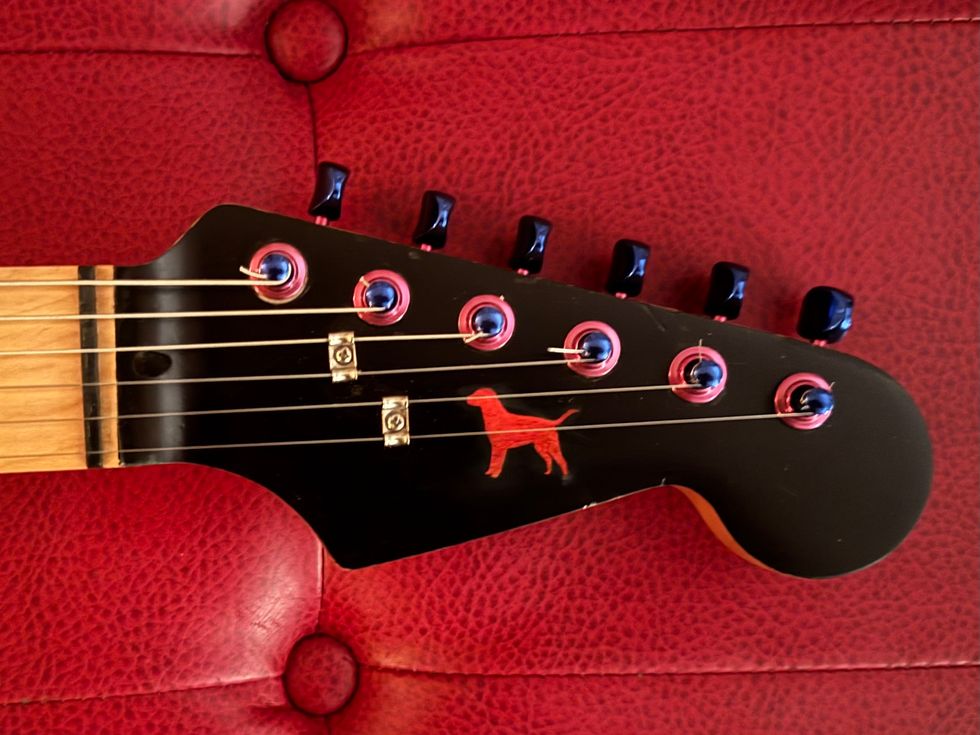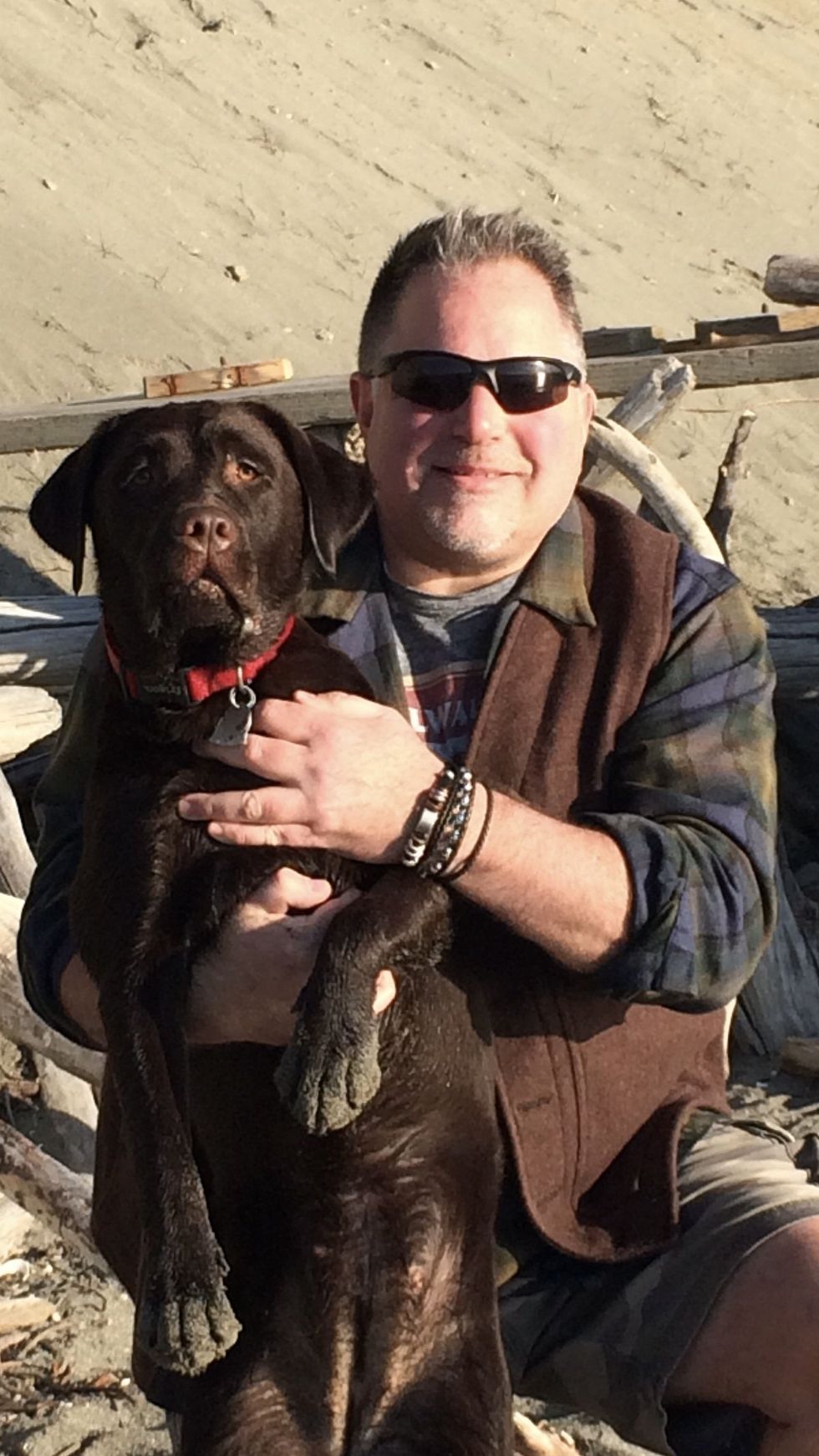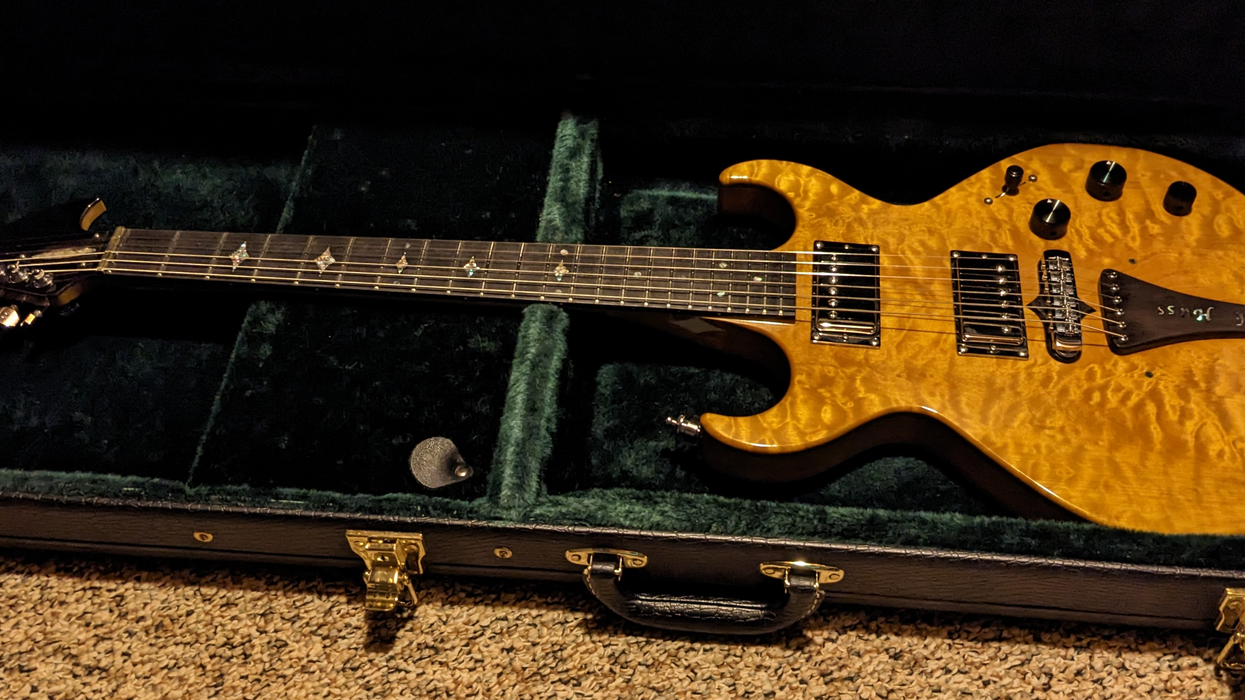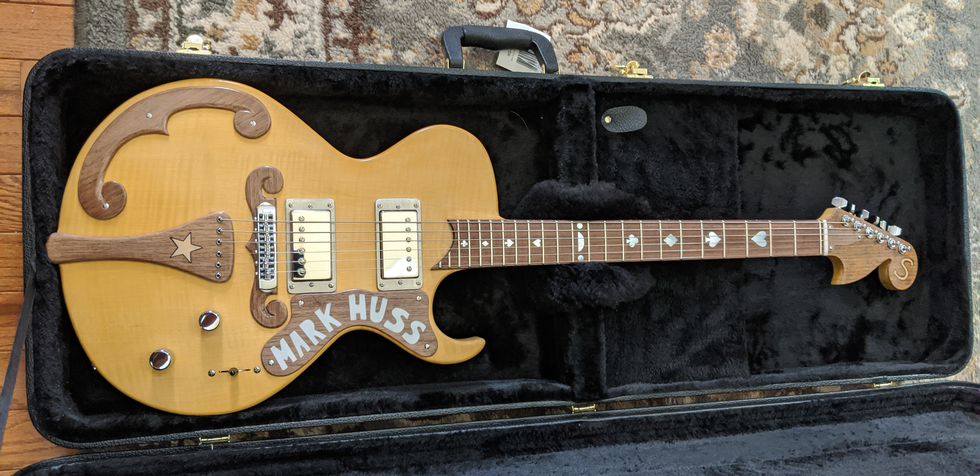Name: Steve Kellett
Hometown: Petaling Jaya, Malaysia
Guitar: Made-in-Japsn Japan Telecaster
Here’s the tale of my Fender Made-in-Japan Telecaster: I bought this guitar in 1996 in Hong Kong from the Tom Lee Music Annual Warehouse Clearance Sale. I didn’t hear about the sale until the last day, so by the time I rocked up to the rented factory unit in the depths of Mong Kok, where they were holding the sale, there were only two guitars left: a wrecked, cheap acoustic and a made-in-Japan export model foto flame ’50s Telecaster.
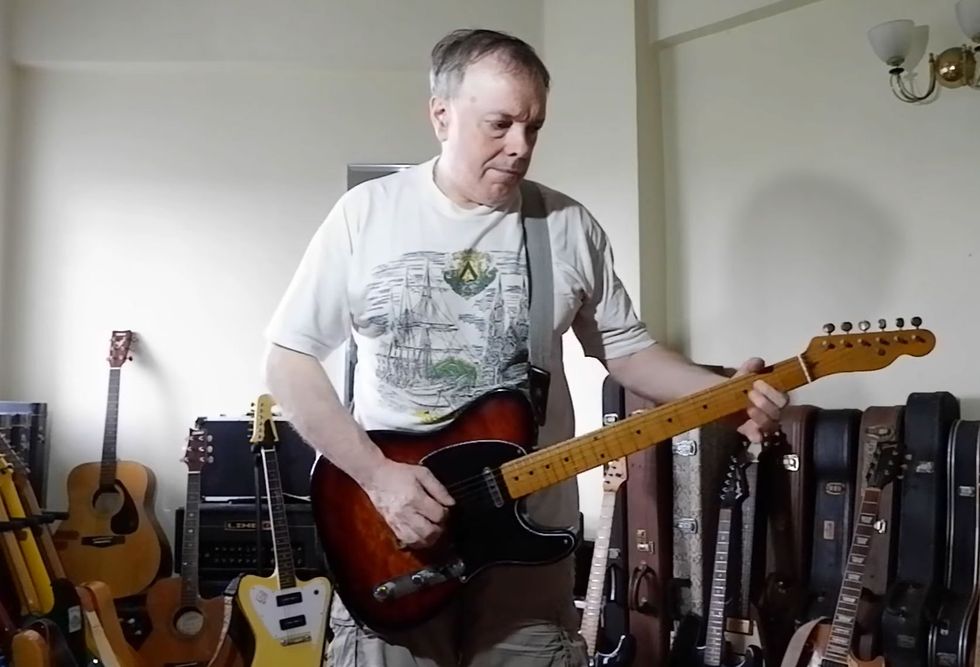
As you can see from Photo 2, the guitar originally had a cherry sunburst finish on the body, but as it dated from ’94 and was one of the first-run foto flames, it had a plain maple V-shaped neck and maple fretboard with vintage-sized frets.
Originally, it had the low-end export electronics: bar-magnet pickups and dime-sized pots. I played it like this for two or three years, and then I got the itch to upgrade the pickups. So, I found a Seymour Duncan Jerry Donahue bridge pickup and a ’52 Fender reissue neck pickup, which I fitted.
Shortly after that, the tone pot disintegrated, so I bought a set of U.S. CTS pots and fitted those. This involved reaming out the holes in the control plate to accommodate the slightly larger pot shafts. To do this, I used a round file and elbow grease. About this time, I also acquired a set of brass bridge saddles to replace the original steel ones. The Telecaster Discussion Page Reissue online guitar forum has a lot to answer for.
Fast forward to about 2010, and the foto flame did what foto flame does: it started to crack. As you can see in Photo 2, it got pretty bad. I tried to address it using superglue, but that just made matters worse.
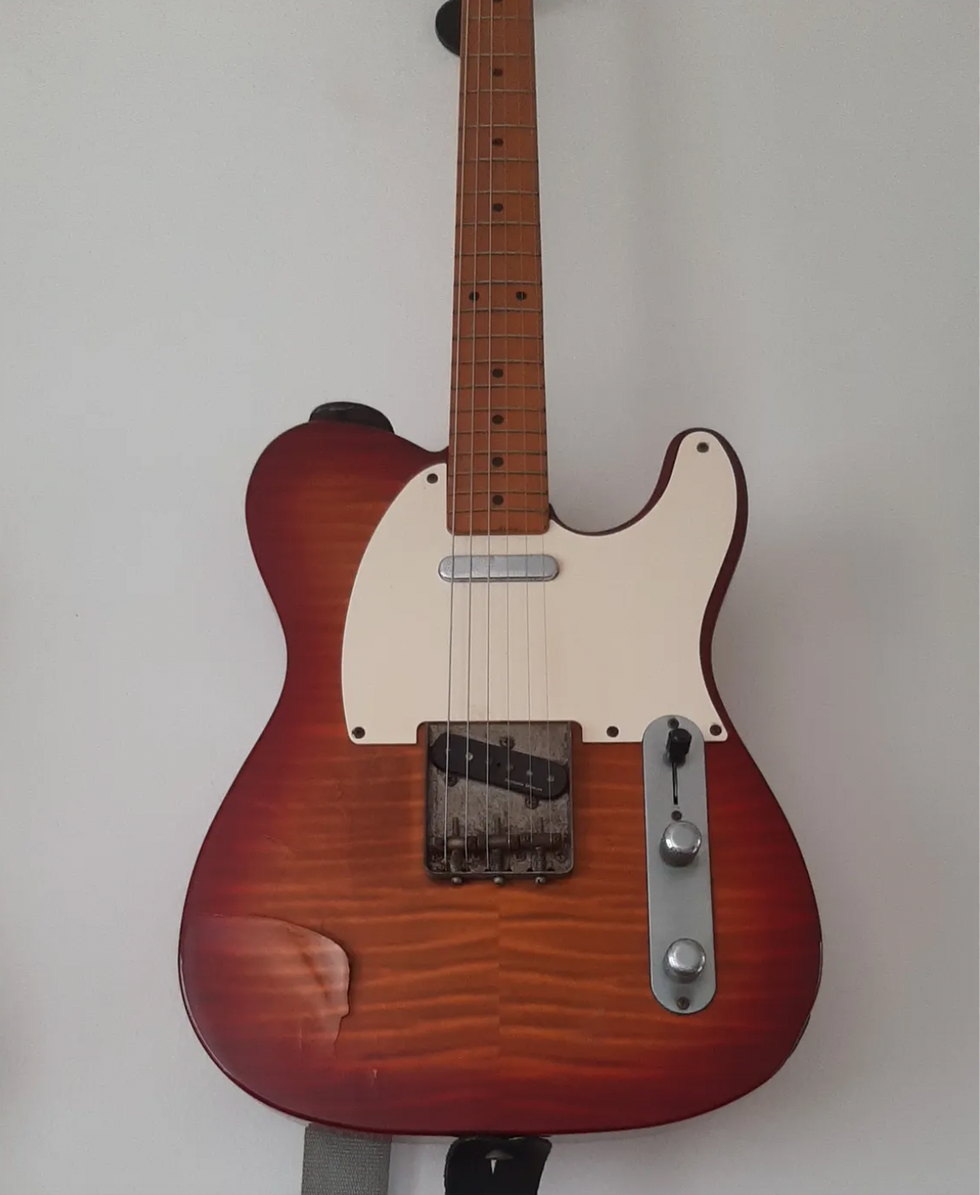
Photo 2
A couple of months ago, I had just had a local luthier do some repair work on a late ’60s Antoria Soundmaster. When he’d completed that, I asked if he could take the Tele and use veneer to properly achieve the effect that the foto flame had originally achieved. Well, he couldn’t find any decent figured maple veneer locally, but instead we selected some figured movingui and a tobacco sunburst finish base. Photo 1 shows the final result.
While he was at it, he also replaced the neck pickup cover with an open-topped cover exposing the polepieces, and a 4-way switch, giving series and parallel options for the pickup combination. We figured that the original white pickguard wouldn’t look that great with the new finish, so I picked up both black and faux tortoise-shell guards from Musiclily, and after the refinish, we figured that the black guard looked the best. The finished guitar can be seen in Photo 1. What can I say? It is like having a new guitar.
Send your guitar story to submissions@premierguitar.com.
